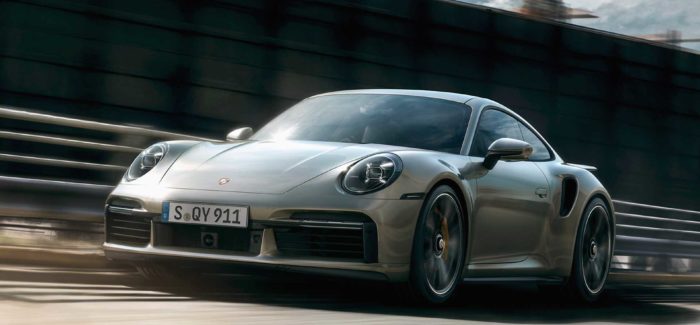03/05/2020 DPCcars Videos

The new 911 Turbo S is powered by a new 3.8-litre boxer engine with two VTG turbochargers, which delivers 478 kW (650 PS; 911 Turbo S Coupé: Combined fuel consumption 11.1 l/100 km; combined CO2 emissions 254 g/km, 911 Turbo S Cabriolet: Combined fuel consumption 11.3 l/100 km; combined CO2 emissions 257 g/km), 51 kW (70 PS) more than its predecessor. Maximum torque is now 800 newton metres (an increase of 50 Nm). The Turbo-specific eight-speed Porsche Doppelkupplung (PDK) cuts the sprint from zero to 100 km/h to 2.7 seconds (0.2 seconds faster), while top speed is unchanged at 330 km/h.
The dimensions of the 911 Turbo S have been increased significantly in line with the enhanced driving dynamics: the body is now 45 millimetres wider above the front axle (1,840 mm), and the overall width is 1,900 mm above the rear axle (an increase of 20 mm). Modified track widths, further developed aerodynamics and the new mixed-size tyres contribute to its agility and sportiness: the track is now 42 mm wider at the front axle and 10 mm wider at the rear axle. The adaptive aerodynamics now include controlled cooling air flaps at the front, while the larger rear wing has been designed for even more downforce. For the first time, the 911 Turbo S transfers its power to the road with mixed tyres in two different sizes: it has 20-inch tyres with their unique 255/35 dimensions at the front and 21-inch 315/30 tyres at the rear. New equipment options underline the much sportier image of the all-wheel drive 911. These include the Porsche Active Suspension Management (PASM) sports chassis that has been lowered by 10 mm and the sports exhaust system with adjustable flaps that guarantees a distinctive sound.
Today’s Other Videos:
